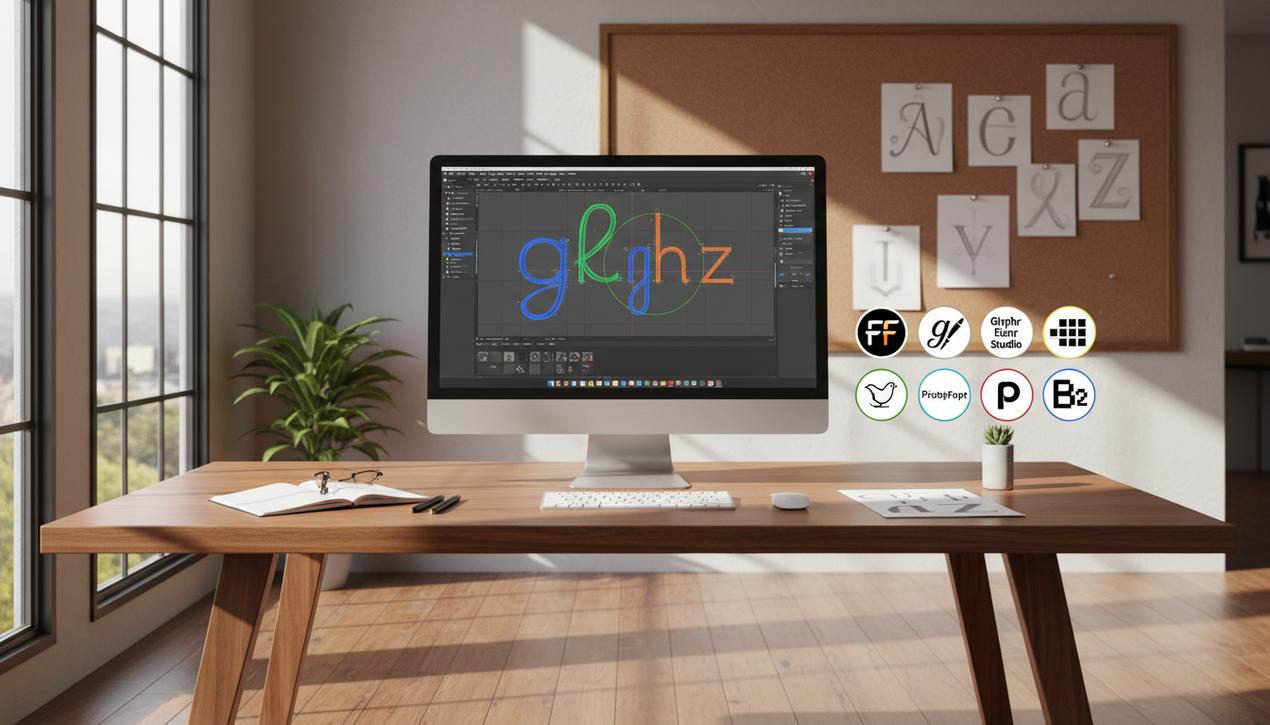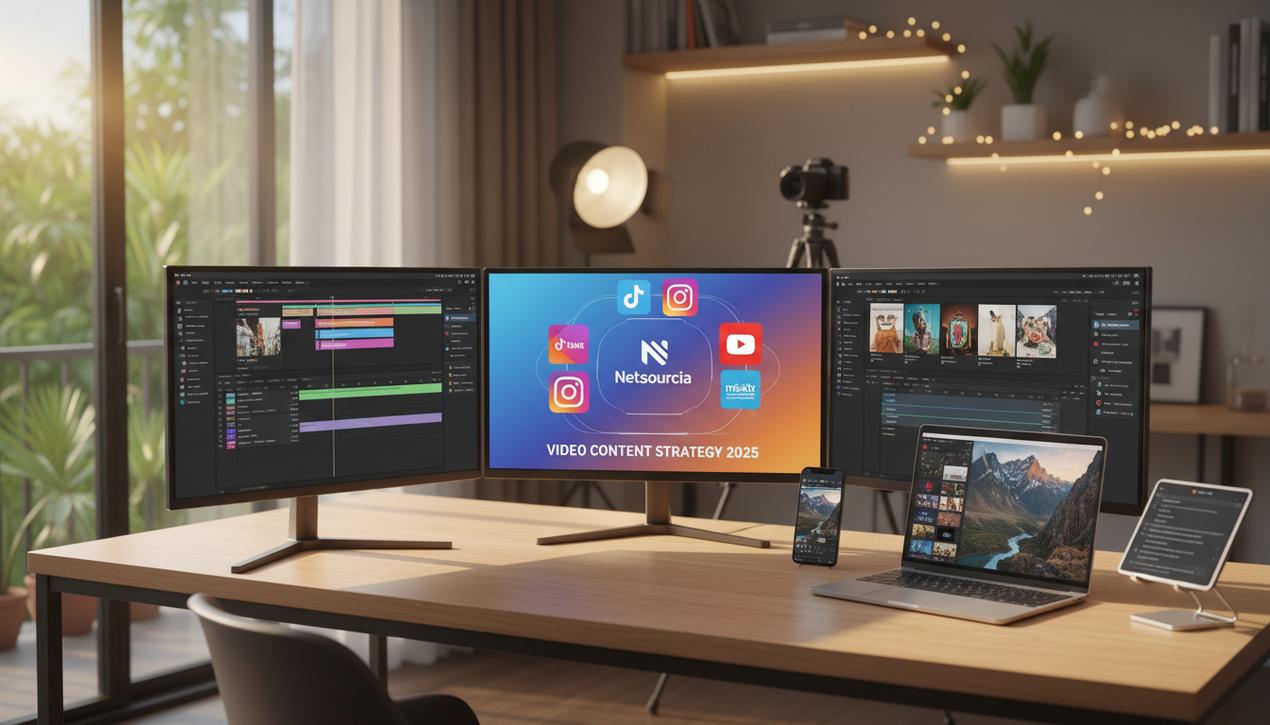7 Free Tools to Create a Custom Webfont in 2025


In a digital world where visual identity is king, having a unique typeface is no longer a luxury reserved for major brands—it’s a powerful strategic asset. While thousands of fonts are available for free, creating your own custom webfont allows you to forge an unparalleled visual signature and strengthen your brand identity. Studies show that over 75% of brands consider typography a key element of their recognition. However, the cost of professional software like FontLab Studio, which can exceed $600, remains a significant barrier for independent creators and small businesses. Fortunately, the web ecosystem offers powerful and free alternatives. Whether you want to design a font for your logo, define your website’s identity, or simply explore a new creative field, accessible tools are available to turn your ideas into functional font files. This guide explores current trends and introduces you to 7 of the best free font editors to kickstart your typography project in 2025.
Why Create Your Own Font in 2025?
Investing the time to create a custom font offers considerable long-term benefits. It’s a choice that goes far beyond aesthetics, touching the very core of your communication strategy and user experience.
Strengthen Your Brand Identity (Branding)
A custom typeface is one of the most effective ways to make a brand memorable. Think of Coca-Cola, Netflix, or Disney—their typography is instantly recognizable. A unique font creates consistency across all your media, from your website and social media—using unique Instagram story text hacks for example—to printed documents, and conveys your brand’s personality: serious, playful, modern, or classic.
Stand Out From the Competition
At a time when millions of websites use the same popular fonts from Google Fonts, a custom typeface makes you stand out. It demonstrates an attention to detail and a level of professionalism that can make a difference in the minds of your customers and visitors.
Improve User Experience (UX)
Creating your own font allows you to master all its technical aspects for perfect readability on all screens. You can optimize letter spacing (kerning), character height, and weight to ensure optimal reading comfort. It’s also an opportunity to design a variable font, a modern format that allows multiple styles to be integrated into a single, lightweight file, thereby improving your site’s performance.
Master Licensing and Costs
The use of commercial fonts is often subject to complex and costly licenses with usage restrictions (web, print, application…). By creating your own font, you are its sole owner. You have complete freedom to use it wherever and however you want, without recurring fees or legal hassles.
The 7 Best Free Tools for Creating Your Webfont
The font editor market has become more accessible, offering powerful tools without costing a dime. Much like finding free icon packs for designs, these solutions are great for designers. Here is a selection of the most accomplished solutions, suitable for different skill levels and needs.
1. FontForge (The Comprehensive Open-Source Solution)
FontForge is the gold standard for free and open-source font creation software. It is a powerful desktop application available for Windows, Mac, and Linux. It allows you to create fonts from scratch or modify existing files. Its interface may seem intimidating to beginners, but its functional depth is unmatched in the free software world. It handles all professional formats (TrueType, OpenType, PostScript) and offers complete control over every glyph, Bézier curve, and OpenType feature. A comprehensive tutorial is available on their site to guide new users.
2. Glyphr Studio (The Modern and Visual Alternative)
If FontForge seems daunting, Glyphr Studio is the perfect alternative. This font editor runs entirely in your browser with a visual and intuitive interface. It is ideal for designers and creatives who want to focus on the shape of the letters without getting lost in complex menus. Glyphr Studio greatly simplifies ligature management and kerning adjustments. Your projects are saved locally in your browser, and you can export your work in OTF or SVG formats.
3. FontStruct (For Modular and Geometric Creations)
FontStruct takes a unique and playful approach to font creation. Also web-based, it operates on a modular construction principle: you assemble geometric shapes (bricks) on a grid to draw your characters. It’s the perfect tool for creating pixel art style fonts, retro typefaces, or highly structured experimental typography. Once finished, your creation can be downloaded as a TrueType (.ttf) file and used on your computer or website.
4. Calligraphr (To Digitize Your Handwriting)
Have you ever dreamed of turning your own handwriting into a font? Calligraphr makes this process incredibly simple. The concept is brilliant: you download a PDF template, fill it out by hand drawing each letter in the provided boxes, scan or photograph it, and upload it to the site. The tool then vectorizes your handwriting and compiles it into a functional font file (.ttf or .otf). The free version is already very powerful for personal use.
5. BirdFont (A Cross-Platform Vector Editor)
BirdFont is another desktop font editor (Windows, Mac, Linux) that stands out for its vector-drawing-centric approach. If you are already familiar with tools like Illustrator or Inkscape, you will feel right at home. It allows you to draw glyphs with great precision and manage the essential aspects of typography. The free version allows you to create fonts under the SIL Open Font License, and you can export your creations in TTF, EOT, and SVG formats.
6. Prototypo (Simplified Parametric Creation)
Prototypo is a decidedly modern web application that operates using sliders and parameters. Instead of drawing each letter, you start with a base template and adjust over 30 parameters (thickness, slant, serifs…) to sculpt the font to your liking. It is an incredibly fast tool for exploring variations and finding the perfect style. The free version is limited but perfect for experimenting and understanding the fundamentals of character design.
7. BitFontMaker 2 (The Pixel Art Specialist)
For fans of retro gaming and 8-bit design, BitFontMaker 2 is a must-have. This online tool is an ultra-simple bitmap font editor: you draw your characters pixel by pixel on a grid. It’s easy, fast, and the result has an inimitable old-school charm. Once your alphabet is complete, you can download your font as a TrueType file to use in your creative projects.
The 5 Key Steps to Creating Your Custom Font
Regardless of the tool you choose, the creation process follows a universal logic. Here are the fundamental steps to successfully complete your project.
- The Creative Brief and Initial Sketches: Before touching a computer, pick up a pencil. Define the personality of your font: is it elegant, bold, friendly? What is its intended use? Sketch the key letters that will define its DNA (like a, e, g, n, o, s).
- Drawing the Glyphs: Move to the digitization phase in your chosen tool. Start by drawing the lowercase letters, then the uppercase, numbers, and basic punctuation. Be sure to maintain stylistic consistency across all characters.
- Adjusting the Spacing: This is a crucial step. First, set the spacing, which is the space each letter occupies. Then, fine-tune the kerning, which is the adjustment of space between specific pairs of letters (like “AV”, “To”, “P.”) for a harmonious visual rendering.
- Testing and Iteration: Export a first version of your font and test it in real conditions, for example by creating a website mockup. Write paragraphs, display it in different sizes and on different backgrounds. You will likely spot imperfections that need correcting. Don’t hesitate to go back and forth several times.
- The Final Export: Once you are satisfied, export your font in the most common web formats. The WOFF2 (Web Open Font Format 2) is now the standard for the web due to its excellent compression. Also include TTF or OTF formats for desktop use.
Creating a custom webfont is an exciting project that brings unique depth and singularity to a visual identity. Thanks to the powerful and free tools available today, this discipline is no longer reserved for an elite group of typographers. By following a structured method and being patient, you can bring to life a typeface that not only reflects you but also significantly enhances the impact of your communication and the experience of your users.




